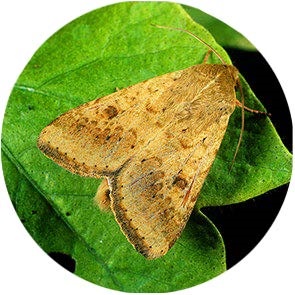


| Latin Name | Helicoverpa armigera |
| Common Name | Cotton bollworm |
| Biology | Adults are nocturnal with strong flight ability, sensitive to black light traps and sex pheromones, and lay eggs on the undersides of leaves. Larvae are highly polyphagous, damaging leaves, flowers, buds, fruits, etc.; infested fruits develop holes, severely affecting yield and quality. This pest occurs 3-7 generations annually, overwinters as pupae in soil, and is a global agricultural pest. |
| Damage | This pest damages multiple crops such as cotton, corn, tomatoes, peppers, and legumes. |
| Distribution Regions | Global cotton-growing regions |
| Monitoring | Pheromone lures mimic natural sex pheromones to attract male insects into specialized traps for population monitoring and suppression. As a core IPM component, monitoring enables early risk detection and targeted control. Mass trapping reduces mating opportunities to curb offspring populations. Protocols: ●Use only with matched traps. ●15-45 traps/hectare,replace/replenish every 4-6 weeks. ●Wear gloves or wash hands with detergent when switching lure types. ●Refer to trap-specific hanging instructions. |
| Recommended Traps | Delta Trap, Wing Trap |

Share your contact information to receive precision-matched pheromone solutions. Should our existing portfolio lack an optimal fit, our synthetic chemistry team will initiate custom development—from molecular structure design to scaled production.